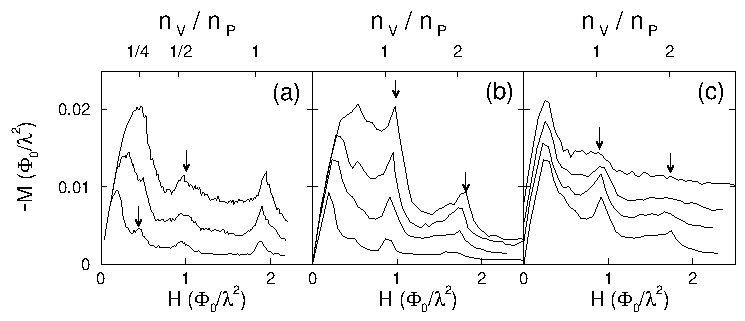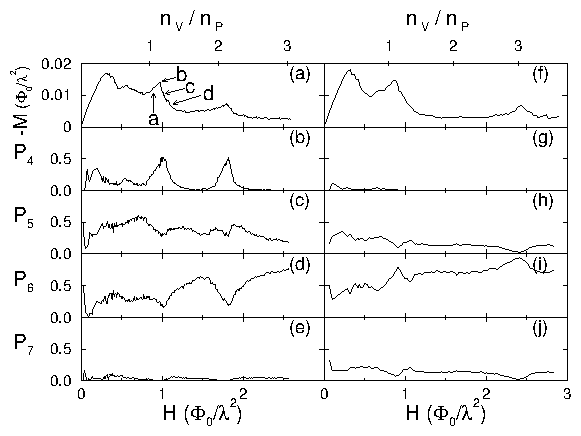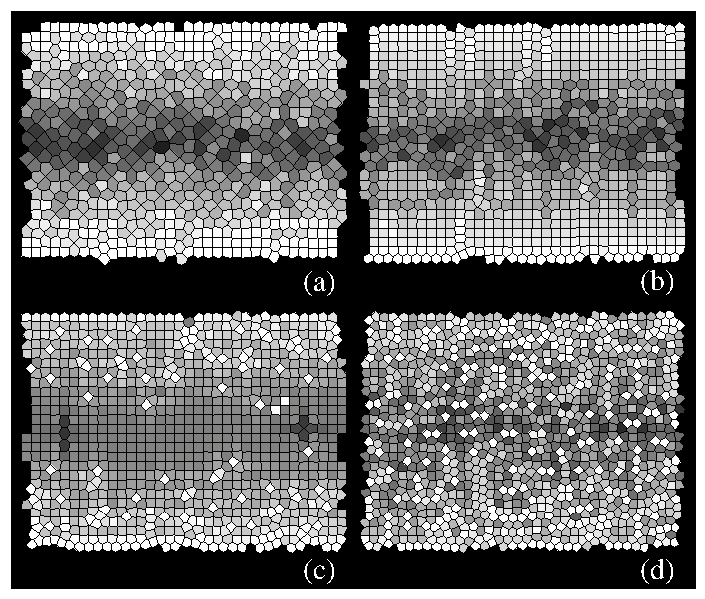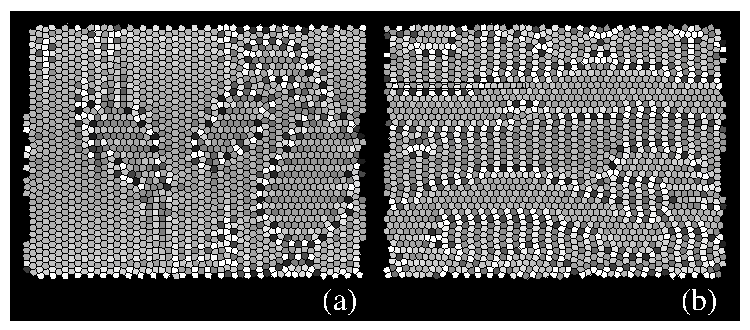 Figure 5:
Magnetization versus field for samples with a square array of
pinning sites.
(a) M(H) with submatching peaks at 1/4 and 1/2 for samples
with weak pinning [fp / f0 = 0.1 (bottom curve), 0.2, 0.3 (top)],
and np about twice as large as in Fig. 1(a):
np=1.83/λ2, Np=1776.
(b) shows M(H) for increasing pinning strength and (c) shows
M(H) for increasing disorder in the location of the pins.
In (b) np=0.86/λ2 and the pin strengths are varied:
fp/f0 = 0.1 (bottom), 0.2 , 0.3 , and 0.4 (top).
In (c) fp is fixed at 0.2 f0 , with disorder introduced
gradually by randomly moving
(with uniform probability)
the pins from the initial square positions by distances up to
δr, for δr = 0 (bottom), λ/8, λ/6,
and λ/4 (top).
All other parameters are the same as those used in Fig. 1(a).
For clarity, consecutive curves in (c) have been shifted vertically.
Color figure
Figure 5:
Magnetization versus field for samples with a square array of
pinning sites.
(a) M(H) with submatching peaks at 1/4 and 1/2 for samples
with weak pinning [fp / f0 = 0.1 (bottom curve), 0.2, 0.3 (top)],
and np about twice as large as in Fig. 1(a):
np=1.83/λ2, Np=1776.
(b) shows M(H) for increasing pinning strength and (c) shows
M(H) for increasing disorder in the location of the pins.
In (b) np=0.86/λ2 and the pin strengths are varied:
fp/f0 = 0.1 (bottom), 0.2 , 0.3 , and 0.4 (top).
In (c) fp is fixed at 0.2 f0 , with disorder introduced
gradually by randomly moving
(with uniform probability)
the pins from the initial square positions by distances up to
δr, for δr = 0 (bottom), λ/8, λ/6,
and λ/4 (top).
All other parameters are the same as those used in Fig. 1(a).
For clarity, consecutive curves in (c) have been shifted vertically.
Color figure
|




